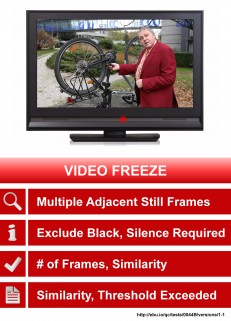
Delivery of programmes by tape gave us certain assurances. The broadcaster could specify the format and the Quality Control (QC) process was simple: if the tape failed to fit into the video tape recorder or was the wrong format, it simply got sent back.
With modern file-based production, content is subjected to a wide variety of post production and format conversion steps, often passing through external companies. The path from the camera and microphone to the playout server is all but transparent. And it is not stable either, as software upgrades are continuously being applied throughout the chain, often without any central coordination.
Files certainly offer flexibility, they can be endlessly updated, copied, versioned, etc., with multiple audio and language tracks. As one producer proudly said, “Files can be edited and changed even while they’re being transmitted. This is brilliant; I can use Twitter to change the end of my programme!”
But one erroneous bit is enough to make a playout server fail during tonight’s beautiful documentary and a recent update to a video encoder could well be the reason why the high-value drama series suddenly looks awful on the catch-up platform, etc.
Aside from their different flavours, it is the sheer number of files used in current operations that makes manual verification impractical. The result is a growing desire for powerful QC products that can complement our human eyes, which are still unsurpassed for subjective QC operations such as spotting wrongly focused shots, but which have a hard time looking at the more abstract parts of files.
EBU initiative
The EBU, recognising there was a growing problem for its members and the industry at large, set up the Strategic Programme on QC to allow its members to share their experiences of QC tools and how they integrate these devices into their own production processes. The work is chaired by industry veteran Andy Quested (BBC), who has seen the need for and the use of QC from all angles, ranging from his work as video editor for ‘quality comedy’, such as Keeping up Appearances, to head of technology for the BBC’s HD and UHD services.
Together with many experts from broadcasters and the leading QC tool manufacturers, the EBU initiative has defined a set of over 200 QC test items that help achieve consistency in the implementation of QC. The EBU.IO/QC tool offers users an online shopping list allowing them to ‘tick off’ the tests they’d like to see applied. To assist vendors and broadcasters alike, the EBU also provides access to a library of QC test files named ‘Bronze Files’ by the group, as they demonstrate many of the issues and problems the QC tools are designed to identify.
The EBU’s QC work has become a valuable reference for other groups, both at national and international level. In the UK, for example, the Digital Production Partnership (DPP) is aligning its work with the EBU’s QC items list; the German broadcasters’ Quality Management group is doing something similar. And the North American Broadcasters Association (NABA) is very interested to be inspired by the EBU QC programme, as well.
EBU.IO/QC can export the selected QC items and their user parameters in the XML format defined in the FIMS Quality Assurance programme, allowing for direct implementation in FIMS compliant QC devices. This feature is being demonstrated at IBC this year for the first time. Users can go to the EBU stand (10.F20) and load a QC Template with selected QC Items onto a USB key and visit QC vendors to import their test plan.
We are actually seeing the implementation of a hierarchical approach to Quality Control, where broadcasters and distributors can work with EBU harmonised QC Items. This helps improve not only clarity of ‘what is being checked’, but also interoperability, as products can be built with the same target values and tolerances in mind.
Reporting requirements
Next on the roadmap for the EBU’s QC work is a recommendation on the reporting structure used for QC. The aim here is to allow easy integration of validation tools in complex production facilities by specifying a baseline common format, without constraining the creation of more ‘filtered’ versions for specific purposes.
A playout operator may, for example, want to see only very specific information where errors could cause the server to fail to play the programme, while a centralised logging tool may benefit from being passed the most detailed report available. The reporting approach is being defined in tight co-operation with the FIMS QA experts.
A key outcome of this work will be an exchangeable trusted QC report, where someone receiving a programme from a production company or a distributor or even just another programme area, will be able to trust the supplied QC report as if they carried out the QC themselves. Broadcasters in several European countries are already experimenting with this concept.
The availability of the EBU QC items and related test material will help them to improve the efficiency of their QC processes. Visit the EBU stand (10.F20) to find out more or go to EBU.IO/QC.







